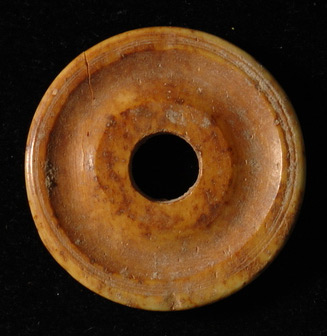This item is one of 55 at the Penn Museum that is marked as “spindle whorl” and dated to the period of Roman rule in Judea. All 55 items are from Penn’s archaeological expedition in Beth Shean during the 1920s. Spindle whorls are disc- shaped objects with a hole in them, and they are attached to the spindle rod to provide weight and momentum as fiber was spun into yarn. Spindle rods were made of wood, and therefore disintegrate, but since spindle whorls were made of materials like ivory, glass, and bone, they survive in the archaeological record.
These items reflect the ubiquity of spinning in the ancient household. The ancient home was not a refuge from work, but rather a site of work. This is especially true of textile work. A great variety of textile products, destined for a variety of uses, were produced and traded throughout the Roman Empire. Spinning represented a major bottleneck within the process of textile production since it was extremely labor- intensive work. Spinning was ever-present work, the work free and enslaved women in the household could not escape. The bayit was not the site of decommodified work hermetically sealed from the market, but rather the social unit that regulated free and enslaved women’s work for that market.
